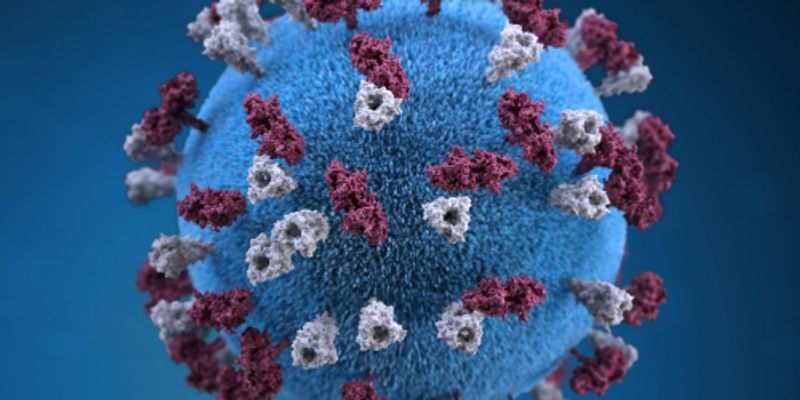Viral Genomics
Viral genomics uses advanced analytical technologies to study the biology of disease-causing viruses at a genetic level. The aim of viral genomics is to better understand how viruses interact with their hosts and how infections spread through communities. This enables drug and vaccine development efforts as well as informing public health policies.
-
SEP 12, 2018 | 1:30 PMDiseaseLand is an integrated genomics database and visualization software that helps researchers explore 1000s of public and private datasets covering, but not limited to therapeutic areas su...Speaker: Lucy Williams, PhDSEP 12, 2018 | 1:30 PMReducing the impact of infectious diseases is becoming increasingly vital as the prevalence of antimicrobial resistance (AMR) continues to rise, threatening the effective prevention and treat...SEP 12, 2018 | 12:00 PMWhole genome sequencing of bacterial isolates via next-generation sequencing is becoming a standard approach for clinical microbiology and bio-surveillance labs seeking to conduct outbreak in...Speaker: Winnie Ridderberg, PhDSEP 12, 2018 | 12:00 PMEvery year, approximately 800,000 critically ill patients are hospitals in the USA with undiagnosed infections. The only option is to treat these patients with broad-spectrum antimicrobial th...SEP 12, 2018 | 10:30 AMSome bacteria can use an electrode as an electron donor for respiration, generating an electrical current in the process. We are trying to understand a bacterial community that uses electrici...SEP 12, 2018 | 6:00 AMThe WHO has set ambitious targets for eliminating TB in low-incidence countries such as the US and Canada. While it’s true that the majority of TB cases in these settings arise from rea...JUL 19, 2018 | 9:00 AMDATE: July 19, 2018TIME: 09:00am PDT Pancreatic ductal adenocarcinoma (PDAC) is a deadly disease with a 5 year-survival rate of approximately 6%. Despite recent...JUN 21, 2018 | 7:30 AMCrohn’s disease and ulcerative colitis also known as inflammatory bowel diseases or IBD, are characterized by chronic, recurrent inflammation of the gastrointestinal tract, which result...APR 12, 2018 | 12:00 PMInappropriately prescribed antibacterials for viral respiratory illness contribute to increased healthcare costs, unnecessary drug-related adverse effects, and drive antimicrobial resistance....APR 12, 2018 | 9:00 AMThe Whiteson lab uses culture-independent metagenomics, metabolomics, and ecological statistics along with hypothesis driven, reductionist microbiology to answer questions about how bacteria...NOV 07, 2017 | 10:00 AMDATE: November 7, 2017 TIME: 10:00AM PSTChimeric Antigen Receptor (CAR)-transduced T lymphocytes have demonstrated impressive clinical activity against B cell malignancies in...SEP 14, 2017 | 12:00 PMGenome sequencing can be used to discover new pathogens but it can also be used to monitor known ones. This is known as genomic surveillance and it becoming an increasingly important tool in...Speaker: Josh QuickPresented at: Microbiology & Immunology Virtual Event Series 2017
Sponsored By: Oxford Nanopore TechnologiesSEP 14, 2017 | 7:30 AMQuinolones are one the most commonly prescribed classes of antibacterials in the world and are used to treat a broad variety of Gram-negative and Gram-positive bacterial infections in humans....SEP 14, 2017 | 6:00 AMA rapidly growing number of viruses of lower eukaryotes have been reported in the past few decades. These have enhanced our understanding of virus evolution and diversity. Simultaneously, som...SEP 13, 2017 | 12:00 PMBackground: In March 2014, a molecular cluster of five multidrug resistant Mycobacterium tuberculosis was detected by the Austrian National Reference Laboratory. An investigation was initiate...SEP 13, 2017 | 9:00 AMVirus – host interactions are currently among the most intensively studied research areas due to the promising new antiviral approaches emerging from these studies. Indeed, RNA viruses,...Speaker: Peter L. Nagy, MD., PhDPresented at: Microbiology & Immunology Virtual Event Series 2017
SEP 13, 2017 | 7:30 AMIncreasing prevalence and severity of multi-drug-resistant (MDR) bacterial infections has necessitated novel antibacterial strategies. Ideally, new approaches would target bacterial pat...SEP 13, 2017 | 6:00 AMAdjunct probiotic therapy has the potential to decrease Clostridium difficile disease incidence and severity. After screening several potential probiotic bacteria for intrinsic resistance to...SEP 13, 2017 | 6:00 AMProkaryotes have long been at war with bacteriophage. The evolutionary pressure of this struggle has led both sides to develop sophisticated defenses. Notably, CRISPR-Cas systems evolved to l...Speaker: Megan Hochstrasser, PhDPresented at: Microbiology & Immunology Virtual Event Series 2017
JUN 28, 2017 | 7:00 AMDATE: June 28, 2017TIME: 7:00am PT, 10am ETAs gene therapy approaches usually require large amounts of AAV vectors for clinical use, few manufacturing processes have been repo...Speaker: Christine LeBec, PhDPresented at: Beckman Coulter Life Sciences Virtual Trade Show
Sponsored By: Beckman Coulter Life SciencesFEB 22, 2017 | 6:00 AMRecent advances in DNA sequencing have now made it possible to characterize genomes, transcriptomes and even methylomes which is transforming both basic research and clinical practice. Whole...NOV 10, 2016 | 10:00 AMBulk analysis often leads to conclusions that assume averages reflect the dominant biological mechanism operating within an entire population. To fully understand how cellular heterogeneity c...NOV 03, 2016 | 10:30 AMThe recent Zika virus outbreak highlights the need for low-cost diagnostics that can be rapidly developed for distribution and use in pandemic regions. In early 2016 we developed a pipe...Speaker: Keith Pardee, PhDNOV 03, 2016 | 6:00 AMSanger sequencing and polymerase chain reaction (PCR) methods have been the standard molecular methods in clinical diagnostics for decades. Next-Generation Sequencing (NGS) technology r...Speaker: Gerd Michel, PhD , Lou Welebob
SEP 12, 2018 | 1:30 PM
DiseaseLand is an integrated genomics database and visualization software that helps researchers explore 1000s of public and private datasets covering, but not limited to therapeutic areas su...
Speaker:
Lucy Williams, PhD
SEP 12, 2018 | 1:30 PM
Reducing the impact of infectious diseases is becoming increasingly vital as the prevalence of antimicrobial resistance (AMR) continues to rise, threatening the effective prevention and treat...
SEP 12, 2018 | 12:00 PM
Whole genome sequencing of bacterial isolates via next-generation sequencing is becoming a standard approach for clinical microbiology and bio-surveillance labs seeking to conduct outbreak in...
Speaker:
Winnie Ridderberg, PhD
SEP 12, 2018 | 12:00 PM
Every year, approximately 800,000 critically ill patients are hospitals in the USA with undiagnosed infections. The only option is to treat these patients with broad-spectrum antimicrobial th...
SEP 12, 2018 | 10:30 AM
Some bacteria can use an electrode as an electron donor for respiration, generating an electrical current in the process. We are trying to understand a bacterial community that uses electrici...
SEP 12, 2018 | 6:00 AM
The WHO has set ambitious targets for eliminating TB in low-incidence countries such as the US and Canada. While it’s true that the majority of TB cases in these settings arise from rea...
JUL 19, 2018 | 9:00 AM
DATE: July 19, 2018TIME: 09:00am PDT Pancreatic ductal adenocarcinoma (PDAC) is a deadly disease with a 5 year-survival rate of approximately 6%. Despite recent...
JUN 21, 2018 | 7:30 AM
Crohn’s disease and ulcerative colitis also known as inflammatory bowel diseases or IBD, are characterized by chronic, recurrent inflammation of the gastrointestinal tract, which result...
APR 12, 2018 | 12:00 PM
Inappropriately prescribed antibacterials for viral respiratory illness contribute to increased healthcare costs, unnecessary drug-related adverse effects, and drive antimicrobial resistance....
APR 12, 2018 | 9:00 AM
The Whiteson lab uses culture-independent metagenomics, metabolomics, and ecological statistics along with hypothesis driven, reductionist microbiology to answer questions about how bacteria...
NOV 07, 2017 | 10:00 AM
DATE: November 7, 2017 TIME: 10:00AM PSTChimeric Antigen Receptor (CAR)-transduced T lymphocytes have demonstrated impressive clinical activity against B cell malignancies in...
SEP 14, 2017 | 12:00 PM
Genome sequencing can be used to discover new pathogens but it can also be used to monitor known ones. This is known as genomic surveillance and it becoming an increasingly important tool in...
Speaker:
Josh Quick
Presented at: Microbiology & Immunology Virtual Event Series 2017
Sponsored By: Oxford Nanopore Technologies
Sponsored By: Oxford Nanopore Technologies
SEP 14, 2017 | 7:30 AM
Quinolones are one the most commonly prescribed classes of antibacterials in the world and are used to treat a broad variety of Gram-negative and Gram-positive bacterial infections in humans....
SEP 14, 2017 | 6:00 AM
A rapidly growing number of viruses of lower eukaryotes have been reported in the past few decades. These have enhanced our understanding of virus evolution and diversity. Simultaneously, som...
SEP 13, 2017 | 12:00 PM
Background: In March 2014, a molecular cluster of five multidrug resistant Mycobacterium tuberculosis was detected by the Austrian National Reference Laboratory. An investigation was initiate...
SEP 13, 2017 | 9:00 AM
Virus – host interactions are currently among the most intensively studied research areas due to the promising new antiviral approaches emerging from these studies. Indeed, RNA viruses,...
Speaker:
Peter L. Nagy, MD., PhD
Presented at: Microbiology & Immunology Virtual Event Series 2017
SEP 13, 2017 | 7:30 AM
Increasing prevalence and severity of multi-drug-resistant (MDR) bacterial infections has necessitated novel antibacterial strategies. Ideally, new approaches would target bacterial pat...
SEP 13, 2017 | 6:00 AM
Adjunct probiotic therapy has the potential to decrease Clostridium difficile disease incidence and severity. After screening several potential probiotic bacteria for intrinsic resistance to...
SEP 13, 2017 | 6:00 AM
Prokaryotes have long been at war with bacteriophage. The evolutionary pressure of this struggle has led both sides to develop sophisticated defenses. Notably, CRISPR-Cas systems evolved to l...
Speaker:
Megan Hochstrasser, PhD
Presented at: Microbiology & Immunology Virtual Event Series 2017
JUN 28, 2017 | 7:00 AM
DATE: June 28, 2017TIME: 7:00am PT, 10am ETAs gene therapy approaches usually require large amounts of AAV vectors for clinical use, few manufacturing processes have been repo...
Speaker:
Christine LeBec, PhD
Presented at: Beckman Coulter Life Sciences Virtual Trade Show
Sponsored By: Beckman Coulter Life Sciences
Sponsored By: Beckman Coulter Life Sciences
FEB 22, 2017 | 6:00 AM
Recent advances in DNA sequencing have now made it possible to characterize genomes, transcriptomes and even methylomes which is transforming both basic research and clinical practice. Whole...
NOV 10, 2016 | 10:00 AM
Bulk analysis often leads to conclusions that assume averages reflect the dominant biological mechanism operating within an entire population. To fully understand how cellular heterogeneity c...
NOV 03, 2016 | 10:30 AM
The recent Zika virus outbreak highlights the need for low-cost diagnostics that can be rapidly developed for distribution and use in pandemic regions. In early 2016 we developed a pipe...
Speaker:
Keith Pardee, PhD
NOV 03, 2016 | 6:00 AM
Sanger sequencing and polymerase chain reaction (PCR) methods have been the standard molecular methods in clinical diagnostics for decades. Next-Generation Sequencing (NGS) technology r...
Speaker:
Gerd Michel, PhD
, Lou Welebob
























